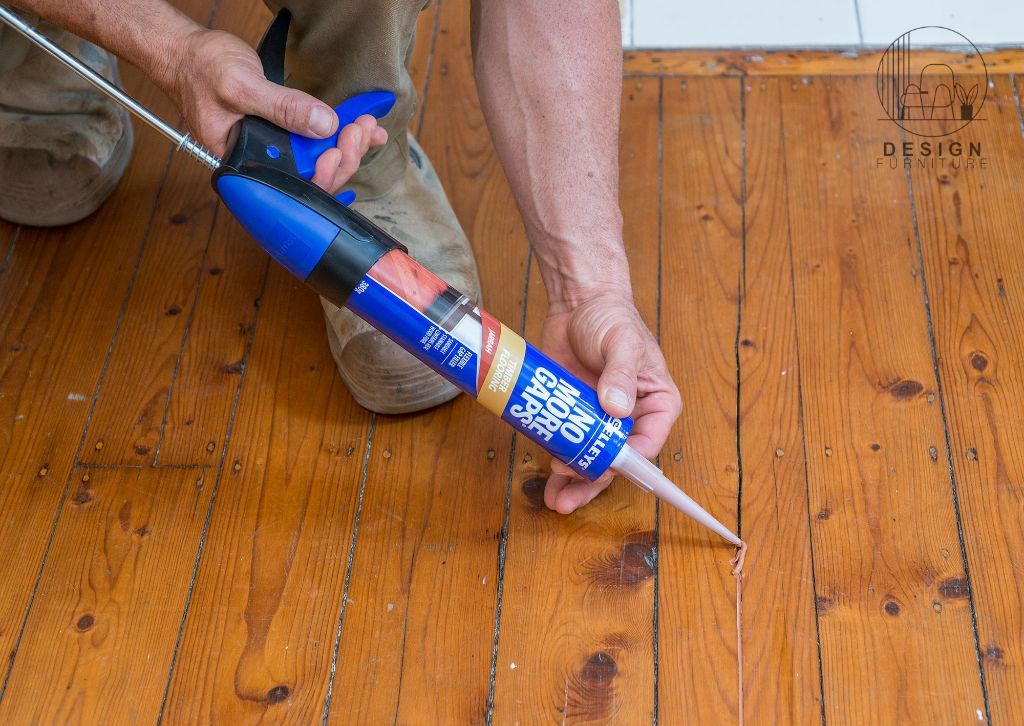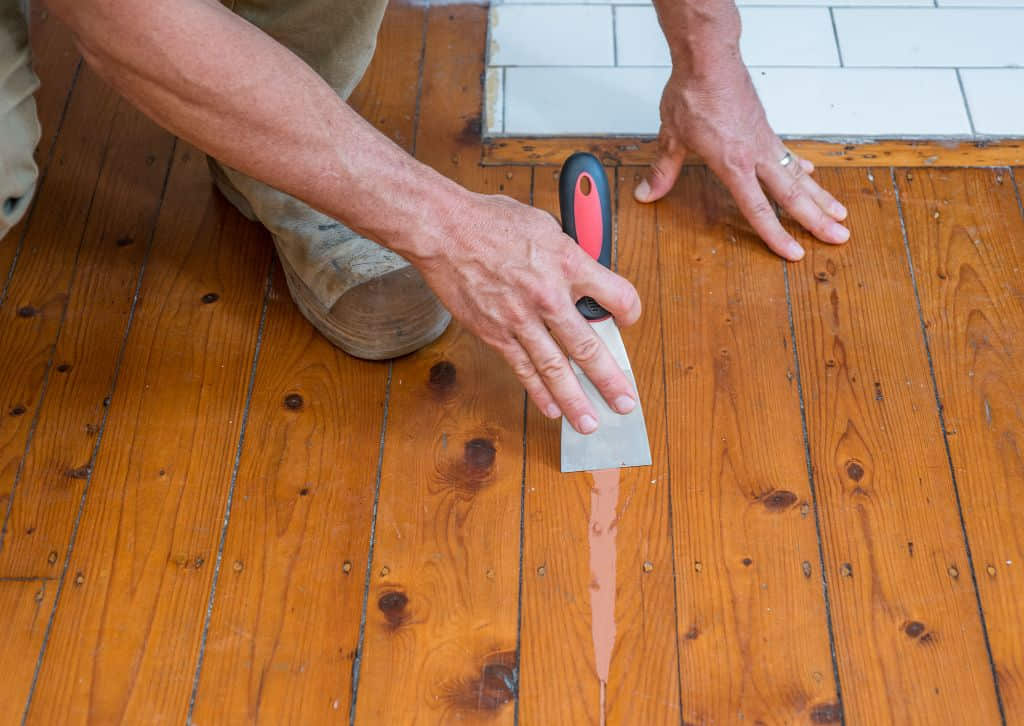Helpful Tips On How To Fix Hardwood Flooring Gaps
The wooden floor tends to lose its moisture and shrinks with the passage of time, which eventually results in gaps forming between the planks and boards of the flooring system. This gap problem is also very common when boards are not tightly laid during the installation process. Another cause of gaps can be moisture problems from the subfloor. If water is logged into the wood, the wood first swells and then shrinks, as if it is drying out.
Wood flooring installed below the furnace room most particularly develops gaps. These gaps not only detract from the appearance of the floor but also become an accumulation spot for dirt and buildup. This all ends up in the ruining of the beautiful hardwood floor. There are some gaps that can’t be filled, however, most of them can be filled using different methods.
If your hardwood floor also has gaps, then this blog is going to be a perfect solution for you, in order to help you fill the gaps in the floor. So let’s get started and discover the most impactful methods of filling the gaps in the floorboards.
Should You Fill Flooring Gaps?
In the first place, you must know that all the flooring gaps are not meant to be filled. If you are noticing the gaps in the flooring in the dry season and not in the humid season, then the wood flooring is simply shrinking due to the cold weather and the gaps will automatically get filled in the summer.
If you fill these types of gaps, then in winter the wood has no space to expand in and this could end up in huge or irreversible damage to the entire floor system. So leave these gaps to fill naturally. With time, the wood becomes old, and shrinks, and will be returned to its original profile as the weather condition change.
However, if the flooring has gaps in summer as well, then you need to fill those because in summer the flooring is in its expanded form, so the gaps in the floor are real.
What You’ll Need
The tools and materials that you need for the filling of flooring gaps are mentioned below:
| Tape | Utility knife |
| Table saw | Putty knife |
| Cloth | Bucket |
| Hammer | Screwdriver |
| Sandpaper | Vacuum |
| Matching hardwood | Jute Rope |
| Cardboard | Wood stain |
| Polyurethane |
You can select the materials according to the method that you choose for the filling of gaps on the hardwood floor.
3 Methods To Fill The Hardwood Flooring Gaps
There are 3 primary methods that can be used for the filling of hardwood flooring gaps. These methods are.
- Using Wood Strips
- Using Wood Putty
- Using Rope
1. Fill Floor Gaps With Wood Strips

In this method, you’ll need to use a table saw to cut the narrow wood strips in order to fill in the hardwood flooring gaps. For the wooden strips, you can use the leftover flooring (from the time of installation). If you don’t have it, then you’ll need to buy the wood of the same species and colour or use matching pieces of hardwood lumber.
Cut The Strips Of The Wood
In the first step, measure the length and width of each gap in the floorboards. Set a table saw carefully and then cut the strips of the hardwood according to the measurement of the gaps.
Try to cut the wood from the groove side so it will be easy to fit it in the gaps. In this manner, the groove of the strip can be fixed in the floorboard’s tongue, so that the gap gets filled seamlessly.
Point To Ponder: Using a table saw requires specific skills, so when cutting the strips on the table saw, you must be careful because it can be dangerous. Always use safety measures before cutting. Take help from an expert if needed.
Glue The Strips And Fix Them In Place
After the wooden strips cutting, it’s now time to fix them into the floor gaps. Apply the wood glue on the sides of the stripes, and then place them into the gaps. Tap the strips with a mallet or hammer so they completely fit in place.
After filling the gaps with the strips, remove the excess glue from the wooden floor with a damp mop to keep the surface clean/clear.
Sand And Stain
Now it’s time to make your floor smoother, which will be done by sanding it with the help of sandpaper.
After sanding, you can now stain or finish the strips so they perfectly match the existing hardwood floor and don’t appear odd. Staining ensures that the entire floor system looks similar.
2. Fill Floorboard Gaps With Wood Putty

Filling the floor gaps with wood putty is also a very common method used for wooden floor fixing. Though, this is not a very effective method for large gaps since it is only used for the filling of small holes in the flooring. The opening of gaps again in the dry season is also possible with this method.
Clean The Floor
The first step in this method is to clean the flooring. For the cleaning of the floor, use a damp mop and clear both sides of the gaps completely so that there is no dust or wood particles buildup accumulated in the gaps.
Apply Wood Putty
Applying wood putty is quite an easy procedure and you can easily conduct it yourself without the need for professional assistance. All you need to do is fill the gaps with a fine bead of putty. For applying wood putty, fill the putty in the hole, and move your fingers in a circular motion so the putty can reach the depth of the hole.
When you notice that the wood putty has been filled in the holes perfectly, take a utility knife and use it to remove excess material from the floor. Be careful with the surface of your flooring so you don’t damage its finish.
Tips: Always select a wood putty that has the same colour as your hardwood flooring so the holes never get prominent. If you can’t find a putty of similar colour, then you can mix two to three different shades of putty to come up with an ideal color according to your floor.
Clear Floor Again And Let The Putty Dry
After scratching the extra putty, now use a damp mop to clean the residue from the floor. Be careful when going over the filled putty so that it does not get pulled out again from the holes due to excessive floor application. Now let the putty dry completely before you go for using the floor again.
You can also use varnish or finishing after the putty gets dried to give all the gaps the same finishing as your flooring.
See Also: How To Clean Laminate Flooring
3. Fill Floorboard Gaps With Rope

This is the traditional method of filling gaps on the floors of old homes and is widely used today, as well. It works wonders for both new and traditional styles of wooden floors. Using natural fibre rope is necessary, such as jute or cotton rope, because synthetic rope never absorbs stain and you have to stain the rope according to the colour of the hardwood floor.
Clean The Gaps
In this process, you’ll need to thoroughly clean the gaps first, so there is no dirt or dust trapped in them. For the cleaning of gaps, use a flathead screwdriver to scratch all the putty wood from the gaps.
Always make sure that you are not damaging the corners of the floorboards while closing the gaps because it will create another problem for you.
When you have scratched the dust and putty, now use a vacuum cleaner to clear out the gaps. Repeat the scratching and vacuuming until the gaps become completely clear/free from all the debris.
Stain The Rope
Now, in this step, you’ll need to stain the rope carefully. For this, take a rope that is slightly wider than the hardwood flooring gaps. If you cannot find a wood stain that is an exact match to your flooring colour, then choose the nearest matching colour.
Pour the stain into the bucket and then put the rope into this bucket carefully so all the sides of the rope get completely dipped. Leave it for 5 to 10 minutes in the bucket and then pull it out and let the excess stain drip back into the bucket.
Now take cardboard, spread the rope on it carefully, and leave it until the stain gets dried completely.
Note: If you are using an oil-based stain, then you must take care not to expose the rope to direct sunlight or heat because it can ignite the rope and will be dangerous to your home.
Fill In The Gaps
Now, after preparing the rope, it’s time to fill the gaps in the wooden flooring. For this, use a putty knife and fit the rope in the gaps forcefully, so as to fit in the gaps easily. Stop forcing the rope when it is slightly above the hardwood flooring surface.
Now trim the rope with a utility knife to make it clean and good-looking. After placing the rope in the gaps, you’ll need to use urethane or clear varnish to make the rope hard as the hardwood flooring. You can also use wood glue in the gaps before placing the rope in them to secure the rope in the gaps.
See Also: What Are The Ideal Tools To Cut Vinyl Plank Flooring
Conclusion
This was our precise guide about dealing with hardwood flooring gaps and how to fill them the right way. We have mentioned the three most popular methods of filling the gaps. You can use any of these methods to make your floor look as new as it was before. Besides, you can also consider these potential fixes for other versions of wooden flooring. Hoping for the fixes to be helpful for you!
FAQs | Frequently Asked Questions
The best method for filling the hardwood floor gaps is to use wooden strips. Always use the same color wooden strips according to the color of the floor, so the look of the floor will be maintained after filling the gaps.
If there are tiny holes in the flooring, then there are many chances that with passaging time, wood will change its texture, so there is no need to fill these little holes. If there are long gaps in the flooring, then fill them with wooden strips or ropes.
No, you can’t use synthetic rope for the filling of flooring gaps because synthetic rope never absorbs stains, so you can’t dye the rope in the color of your flooring. Always try to use natural rope such as jute or cotton rope because they can easily stain.





